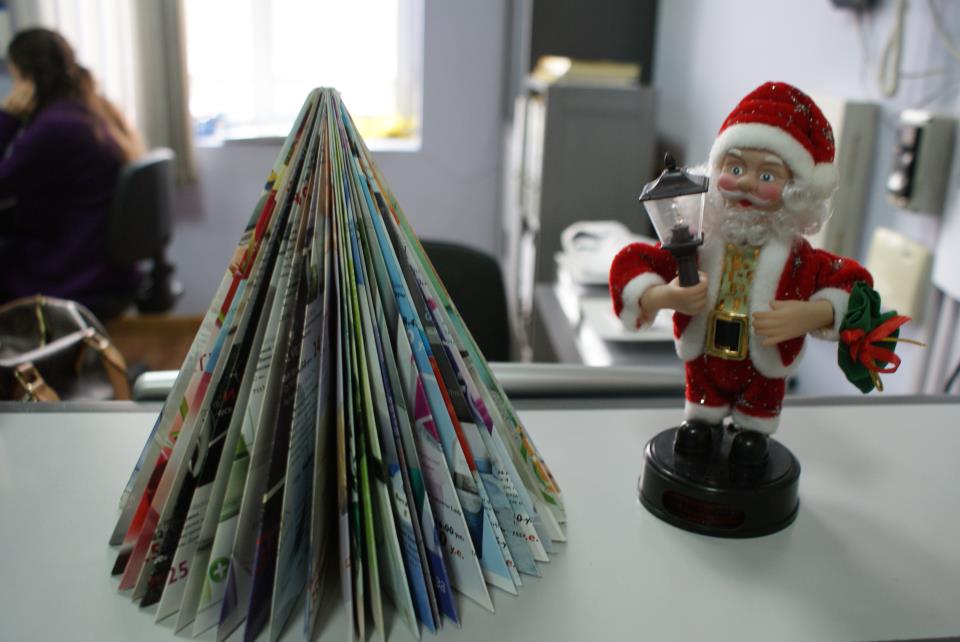The New Year is identified with abundant hospitality, a Christmas tree, and time off work. Also taking somewhat of a break during the holidays is the media, which goes into holiday mode: the news becomes full of happy and light content — songs, comedies, and optimistic stories.
The new year, as a holiday and a period of non-work days, is a new tradition. The almighty archive allows us to get an idea of the reflection of the media of past (outdated) new years. The “excavations” conducted in the National Library of Armenia archives spark revelations that are sometimes amusing and sometimes terrifying.
For example, the archives of newspapers from 1937 viewed in the eyes of today evokes such contradicting ideas. On one hand, there are mass encroachments; on the other hand, there is the building of a “bright and happy” future. At the end of December 1937, the Soviet Armenian press looked like this:
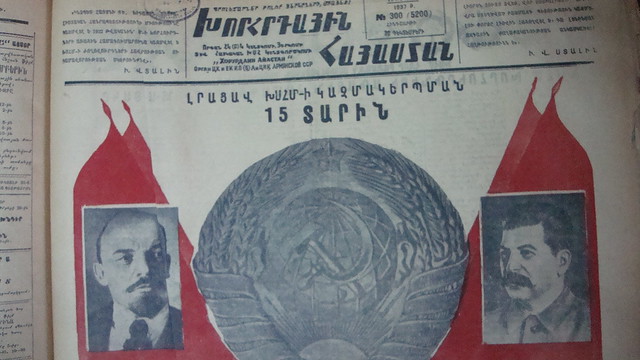
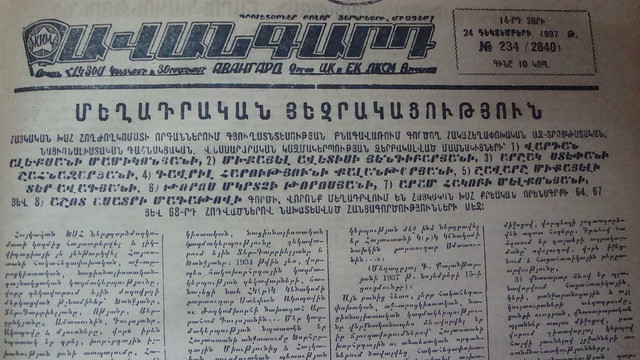
The Soviet Union, as a modern state, rejected the attributes of the past, especially if it had a religious element. Christmas [Epiphany, which Armenians celebrate on January 6] was considered a bourgeois holiday, while the holiday tree was considered a “religious relic.” At the end of the 1930s, the idea of the holiday tree and the holiday was initially tested on children. The implication was this: why should Soviet children be deprived of joy?
On December 31, 1937, the Avangarde published the following on its front page:
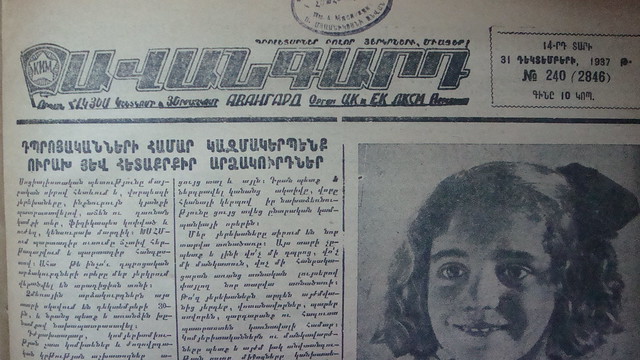
“The socialist state watches with a mother’s love so that children, preparing for an independent life, grow and become masters of [their] will… Our children like the new year’s tree. This year there should not be any school, kindergarten, or boarding school without a new year’s tree shining with holiday lights. Let the children from now on learn songs, poems, and dances, and prepare decorations and clothing for the carnival.“
While the newspaper Khorhrdayin Hayastan (“Soviet Armenia”) founded after the victory of the Bolshevik Revolution [from 1920–1921 it was called Komunist (“Communist”); later, Sovetakan Hayastan (“Soviet Armenia”), and since 1990, simply Hayastan (“Armenia”)] published an article in its last issue of 1937, explaining the rules and goals of the organization of the children’s tree.
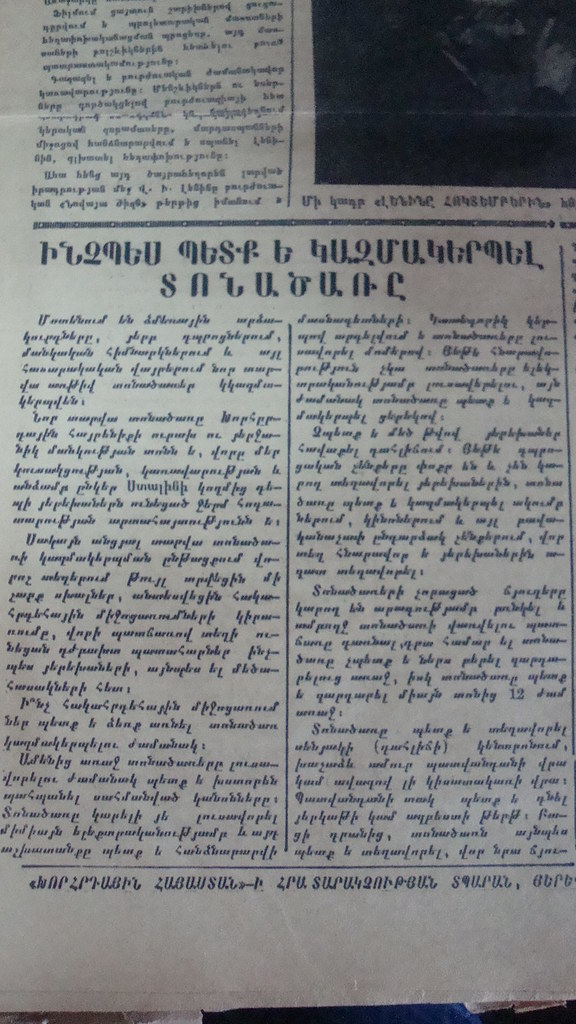
“The new year’s tree is the Soviet homeland’s holiday of a happy and joyous childhood, which is an expression of the tender care of our party, our government, and Comrade STALIN personally toward the children.”
It’s specially mentioned that it’s necessary to adhere to the fire prevention rules. “It is categorically prohibited to light the holiday tree with candles” or gather a large number of children in the halls. The veil of childhood has accompanied the idea of New Year for a long time.
December 31 and January 1 were work days until 1947, when January 1 become a holiday. Later, the holidays became longer and longer, reaching the record-breaking two weeks. While until then, the newspapers constantly stressed that the end of the year was business as usual.
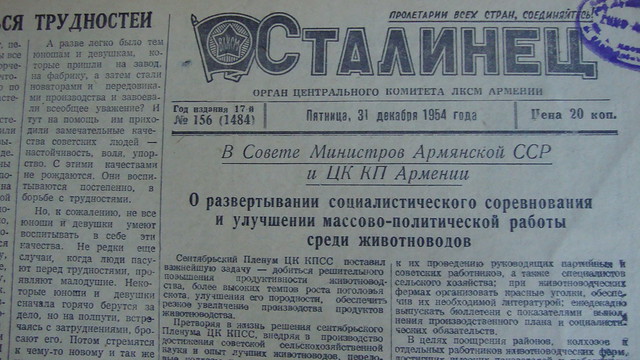
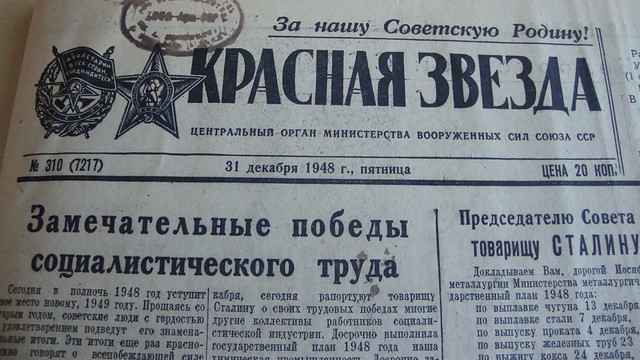
The picture changed during the [Khrushchev] Thaw. The press used the New Year more freely. At the end of 1968, Sovetakan Hayastan published this holiday news:
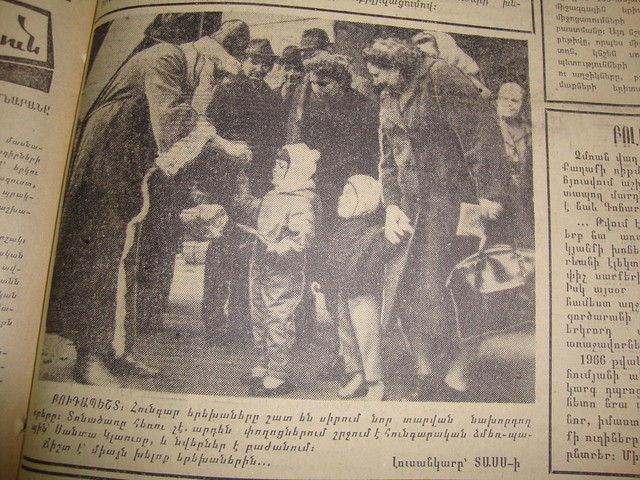
“Budapest: Hungarian children love the days preceding the new year. The holiday tree is not far; the Hungarian Santa Claus is already roaming the streets and distributing gifts: it’s true — only to the good children.”
And this type of information:
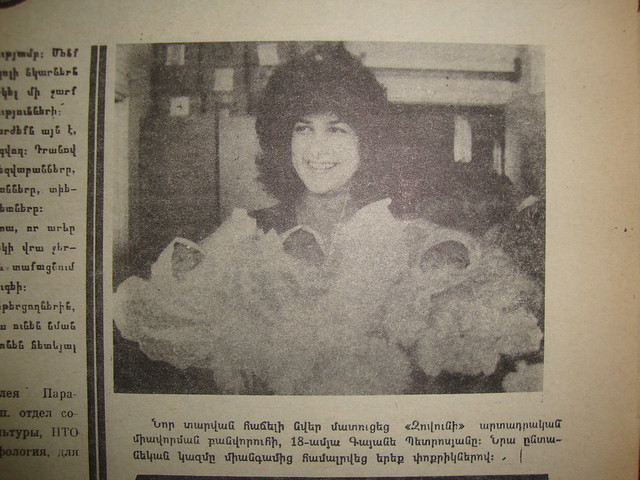
Also appearing is holiday advertising:
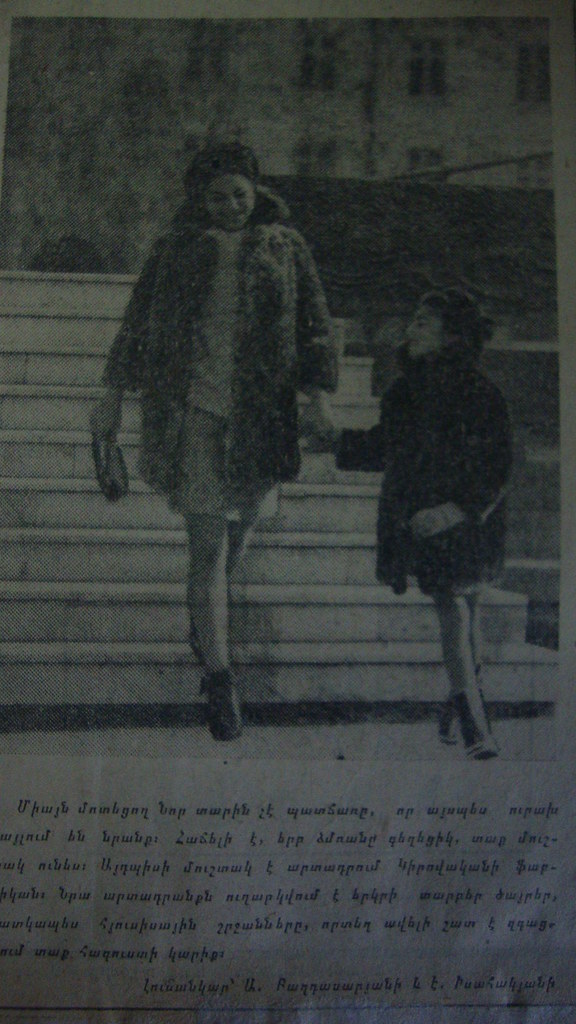
“The new year is not the only reason that they’re walking so happily. It’s nice when you have a beautiful, warm fur coat in the winter. The factory in Kirovakan produces such coats. Its products are sent to different corners of the country, especially the northern regions, where the need for warm clothing is felt even more.“
Even the design of the paper’s front page becomes festive:
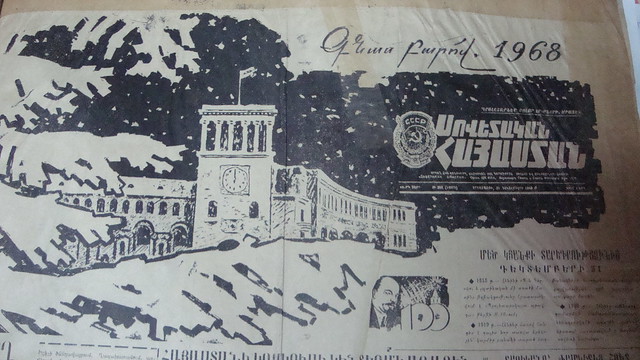
Newspapers’ creative holiday approach, of course, became intensified after the collapse of the Soviet Union, when courageous and urgent collages and caricatures began to appear. And when Armenia gained independence.
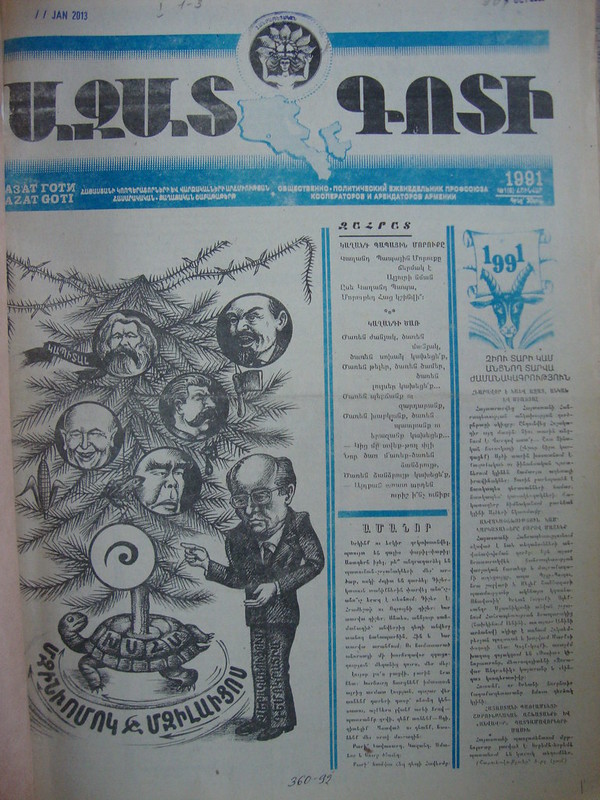
It’s worth remembering that the main “newsmakers” of the new year were not only Santa Claus and the Snow Maiden, but also leaders having the status of “fathers of the nations”.
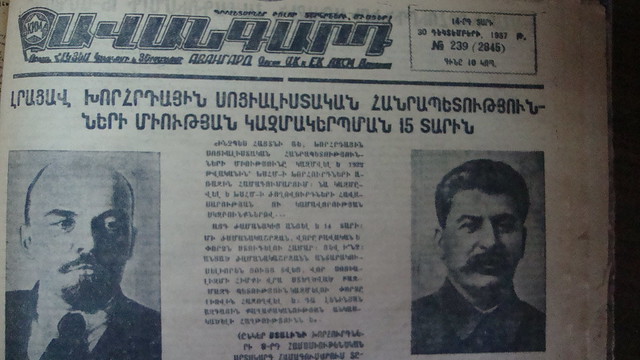
Nune Hakhverdyan

